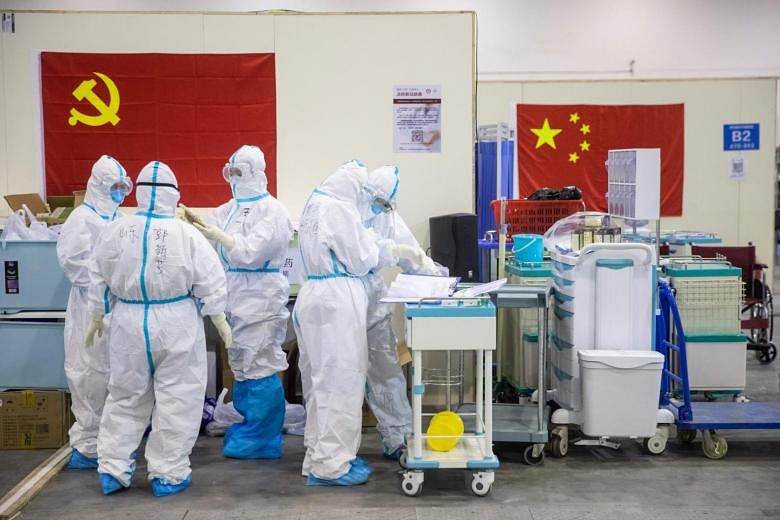BEIJING - The number of new cases of coronavirus in China fell yesterday after health officials changed the criteria for confirmed cases, the second time they have done so in a month.
Cases now require lab testing before they can be confirmed as Covid-19 infections.
With this new guideline, there were 394 cases nationwide on Wednesday - down from nearly 1,700 the day before - bringing the total number of cases to 74,576, the National Health Commission announced.
This is despite 628 new clinically diagnosed cases on Wednesday in Hubei province, the epicentre of the outbreak. Health officials said the number was adjusted downwards to 349 after over 200 lab tests for the cases came back negative.
There were 114 fatalities, bringing the national death toll to 2,118.
China's new guidelines mean that new cases in Hubei are now increasing at a slower rate.
The number of discharged patients in Hubei has also overtaken the number of new infections for the first time, possibly indicating a slowdown in the spread.
There were 114 fatalities, bringing the national death toll to 2,118.
The revision of diagnostic guidelines is the second within a month. After the first revision that came into effect last Thursday, infection numbers spiked dramatically in Hubei province as the criteria for confirmed cases was expanded to include those who exhibited symptoms, had contact or travel history with confirmed cases and a positive CT scan.
A day later, the National Heath Commission removed 108 deaths from its total number due to "double-counting" in Hubei. This has raised doubts over the reliability of China's data on the coronavirus cases.
The new guidelines, while in line with World Health Organisation standards, could also mean the pressure is back on laboratories. Doctors had also previously complained of a shortage of test kits.
Communicable diseases expert David Heymann said the changes in the way the cases are tabulated offer a more accurate picture of the numbers infected.
He said confirming infection based on CT scan and lab testing resulted in many cases, "but also brought in other cases of pneumonia patients who didn't have the virus".
Dr Heymann, who is from the London School of Hygiene & Tropical Medicine, added that in the coming weeks, there should be a clearer idea about the mortality rate of the virus.
"Early on, the mortality (rate) was skewed because it only reflected the most severe of all cases," he said during an online briefing on Thursday.
Professor Gregory Gray, an infectious diseases specialist at the Duke-NUS Medical School in Singapore, said it is common that public health definitions of cases change over time as doctors have a better understanding of the disease and diagnostic tests improve.
But China revising its guidelines twice in a month is slightly unusual, he said. "Given... the change in case definition several days ago, it does seem a bit odd that Chinese public health officials would again change how they are counting cases," he told The Straits Times.
Meantime the number of global confirmed cases has risen to 75,700, and the death toll stands at 2,130.
Two Iranian citizens who tested positive for the coronavirus have died, a Health Ministry official told the state-run Islamic Republic News Agency. They are the country's first fatalities from the outbreak.












